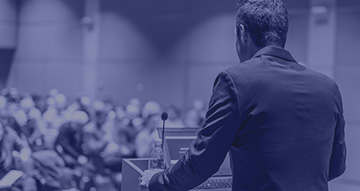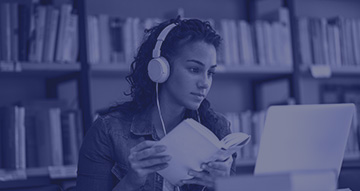
Tracking the pandemic, and more importantly tracking consumer behaviour in the tumultuous times we live in, has been an exciting process. All businesses, whether B2B or B2C, will need to change and re-leverage their abilities to cater to the needs, wants, desires and aspirations of the re-wired consumer. The top three changes are all above the water line of an 80 % plus craving. These are aspects not to be ignored. You need to keep in mind the fact that it is not business as usual anymore. That was so pre-COVID!
It was the best of times. How? It was the best of times for nature. It was the best of times for the birds and the bees. For our trees, for air quality in our cities, and for our waterbodies that saw less pollution being spewed into it.
And most certainly it was the worst of times for businesses. Most businesses. And it was the worst of times for man, woman, and child, all huddled into their homes. All caged and away from the hub-hub of normal life. The world was not our oyster anymore. Instead, the oyster was our world. And the home was the oyster. Everything had to come into it, be it food, grocery, clothing, entertainment or for that matter any service that made for a good life. Everything that was taken for granted suddenly looked all too important, and all too out of reach.
Businesses collapsed everywhere. The airline, hotel and restaurant businesses were the worst to be hit. Businesses and establishments wherever people had to congregate were decimated and cut down to size, cinema theatres and churches and temples alike.
The modern day consumer, particularly every one of us who took modern day living and its ease-factors as given, were suddenly jolted to sit up and smell the coffee and indeed the acrid smell of the pandemic and its many restrictions. Consumers therefore were the most shaken of them all. And this jolt is for real. And permanent too. A jolt that has changed the way consumers will live, work, play, entertain themselves and more.
Consumers and participants in the biggest and best of economies around the world congealed themselves into small, little comfort huddles. The world did not look flat anymore. Instead, the world looked pitted and divided into ghettos. More often than not, these were the homes we lived in. Society had suddenly concentrated into smaller units of families locked in with one another. Not by volition, but by force. We were in the midst of a fear economy. The celebratory economy was dead, if not on the stretcher.
Tracking the pandemic, and more importantly tracking consumer behaviour in the tumultuous times we live in, has been an exciting process in itself. A process that has used every item in the toolkit of contemporary market research to ratify emerging trends. The months of the pandemic have been busy months, therefore.
I have involved myself in the process of understanding consumers, and more importantly understanding change. Change as has been foisted on unwitting and even unwilling consumers in the great Indian marketplace. So, we put together a recent consumer research exercise across 21 cities in India, covering all of eight Metros and 13 Tier-II towns. It had us touching as many as 23,460 consumers. Each living in an average family size of five. We asked them many questions as we found them with lots of time on hand and nothing much to do. And this was unique. More often than not, market researchers find it difficult to get a quality consumer in a captive mood. Not in this study.
Over to the top three findings then - Consumer behaviour has certainly changed; however, does this signal a new tomorrow? Or, are these changes in consumer behaviour patterns temporary blips that will go back to the pre-pandemic norm? Only time will tell.
Several things have happened in our lives during the pandemic. Several traumatic things. These traumatic happenings are likely to affect the way we behave in the future. Business ahead will therefore have two facets, the unusual and the usual. While most businesses will fantasise for the status quo ante to return, it would be imprudent to hope for that to happen all across.
The fear of COVID looms large on everyone’s mind. The consumer is going out that much less. Even when he/she steps out, the radius of that visit in terms of kilometre of travel is that much less The distance travelled by the consumer on a buying visit is today a maximum of three kilometres (to and fro) as opposed to a 16 km (to and fro), which was the earlier norm of the shopping expedition.
The new consumer is therefore that much more comfortable shopping from nearby shops that offer both the basics and the non-essentials. The consumer is thus also making compromises on brands of choice. Brands therefore die in that buying moment and commodity options in the same categories thrive.
Yet another aspect is the fact that the consumer is going out less on these shopping jaunts. The accent is therefore on stocking up. The consumer is picking up larger Stock Keeping Units (SKUs) of products. The packet of biscuits that is a family pack is preferred to the single unit pack. The toothpaste that is of a larger unit size even. This demand is making marketers revive slow-moving larger unit family packs. The consumer is also switching brands in as many as 61.2% of cases per our study when there is lack of availability of the larger family pack choice in the normal brand that is bought. Marketers need to therefore get savvy and involve themselves in a carefully calibrated Big Scale Value Analysis exercise from the consumer perspective, rather than from the marketer perspective on this point of need.
Some things will change forever. And what are these? What are the three big changes we see ahead based on our exploration and what it threw up as macro-diagnostics? Let me list the top three out of the 21 aspects that came up as those that will change in usage, attitude and habit.
1. The Digital Life:
What Osama Bin Laden did to the security products and services industry, the corona pandemic has done to the digital products and services industry. Everyone has embraced the digital way. Even those who had sworn not to go digital, come what may.
The digital life we talk about today is not only about entertainment, advertising and work-related digital life. It is all about payments as well. What demonetisation of high denomination notes could not achieve in 2016, the pandemic has achieved in no time. Cash has taken a back seat and the less-cash economy has made its way into millions of Indian homes. Today, even your Swiggy (Indian food ordering and delivery platform) delivery is pre-paid for, and there seems to be a higher degree of trust in e-payment formats.
Additionally, the digital life has made such deep inroads into our lives, that there is a blur when it comes to understand where the human body ends, and the digital software and device begins. The consumer’s propensity to go digital has received a nudge as never before. There is no going back from the domino effect of this nudge.
‘Digitalism’ is the new religion ahead in every sphere we dabble in. Every business needs to have a digital avatar and every human needs to have a digital avatar as well. Across the sample homes we scoured, this digital chase touched as many as 89.7% of homes. And that is a whopping number one trend to chase.
2. Small is Beautiful:
The pandemic had the big chain stores shut for a while. The big super-market, even for buying-in the essentials was not an option for a while. Air-conditioned super-markets were not to be walked into. In the bargain, the local corner grocer, the ‘kirana’ outlet pulled together its act. As people got locked down and could only walk to buy their essentials, the corner grocer was rediscovered as an option. No air-conditioning here. Just a very functional way to buy what was needed for the day or the week.
Similarly, branded stores within malls remained closed and the walk-ins into outlets of the same brands on the high street were a better option to explore. Small is beautiful again.
As Paris explores the concept of a 15-minute city, where everything is available within a 15-minute walk or bike-ride, India with its market-congestion metrics, is a three -minute city for sure. The small establishment is suddenly the beautiful establishment. And the radius of reach is a three-minute stretch!
This trend factoid was witnessed in as many as 87.4% of homes touched. This figures number two on my list of trends to run behind.
3. New Darwinism:
Survival of the fittest is certainly in effect, but with a twist. It is not survival of the wealthiest for a change. It is survival of the healthiest!
There is a clear accent towards better health among homes of every kind. There is a new-found enthusiasm to stay healthy. A pushback reaction even as consumers got pushed to the wall by the pandemic and its scare. There is a yen to invest in enhancing immunity. Anything that boosts it is seen as a real option to bite into. In the bargain, marketers are taking due and undue advantage, what with the “anti-corona” shirt that kills 99% of the virus, and bizarre offerings of every kind. Remember, this is the age of Chyavanprash (Ayurvedic health supplement) Ice-cream as well!
81.1% of the homes we touched tell us this is a permanent change in their lives and way of living.
Now, is this list comprehensive? No, it is not. We have a total of 21 habits, usage patterns and attitudes that will change. And that’s a lot. Simply means that the pandemic has shaken and stirred the consumer to good impact. Life will be different ahead in our consumer markets. Those businesses that see this change and cater to the changed needs of the post-pandemic consumer will do well. Those that don’t will still need to wait for business as usual. Whenever that happens. Or not.
The point is simple. All businesses, whether B2B or B2C facing, will need to change and re-leverage their abilities to cater to the needs, wants, desires and aspirations of the re-wired consumer. The top three changes are all above the water line of an 80 % plus craving. These are aspects not to be ignored. They are simple and in- the-eye. Never mind whether you are a brand of tea or smartphone, you need to keep the fact that it is not business as usual anymore. That was so, so pre-COVID!
The Way Forward
Post pandemic, firms will need to really re-think the entire system, process and order of doing business in the future. A lot has changed at the front- end of the consumer in terms of purchase pattern, distance of travel to buy, periodicity of purchase, brand choice metrics, attitude to the commodity option on offer, usage, and purchase and subsequent consumption behaviour. The marketer needs to understand these changes with a quick degree of sensitivity and act. If the front-end has changed, the back-end better change as well to meet the new demands of the new consumer.
Firms would require to be quick in assessing for their respective offers- the right quotient of being physical and being digital. Not getting it right could mean valuable loss of sales potential, volume and loss to competition of the commodity kind. This could further mean marketing regress, as the brands that enjoy dominant shares in the market today, have earned it with substantial investments in the brand-building process. The superior end consumer price they command as opposed to commodity offerings, and indeed the superior margins they enjoy today, is a result of carefully planned investments in building brand premiums and choice.
Firms need to equally pay attention to the physical modes of selling and distribution, even as they attempt to get everything digital going. It is important to understand the fact that the consumer is speaking in twin-tongues today. At one end, the consumer is expressing a desire to buy online through the mode of e-commerce, and at another he is wanting to buy local. And physical. Within a close radius of reach. There is the tussle between the physical and the digital modes of buying. This tussle is going to cause for a dynamic process where the water of convenience and personal appeal will find its own level, basis the real nature of the consumer in question. The consumer will ultimately decide what to buy online and what to buy physically at a store close to him/her. And how much of each. That decision in itself is a complex one.
In the limited number of homes we studied, it was revealed that the physical-buy process is alive and kicking like never before. While e-commerce offers solutions of every kind and conveniences of every kind as well, the consumer out there in the great Indian market is yet to jump in with gusto. At least not with the equal gusto that the PR campaigns of these e-commerce companies seem to suggest.
Keywords:
Marketing, Consumer Behaviour, Strategy, Research, Business, Brand Management

Harish Bijoor



